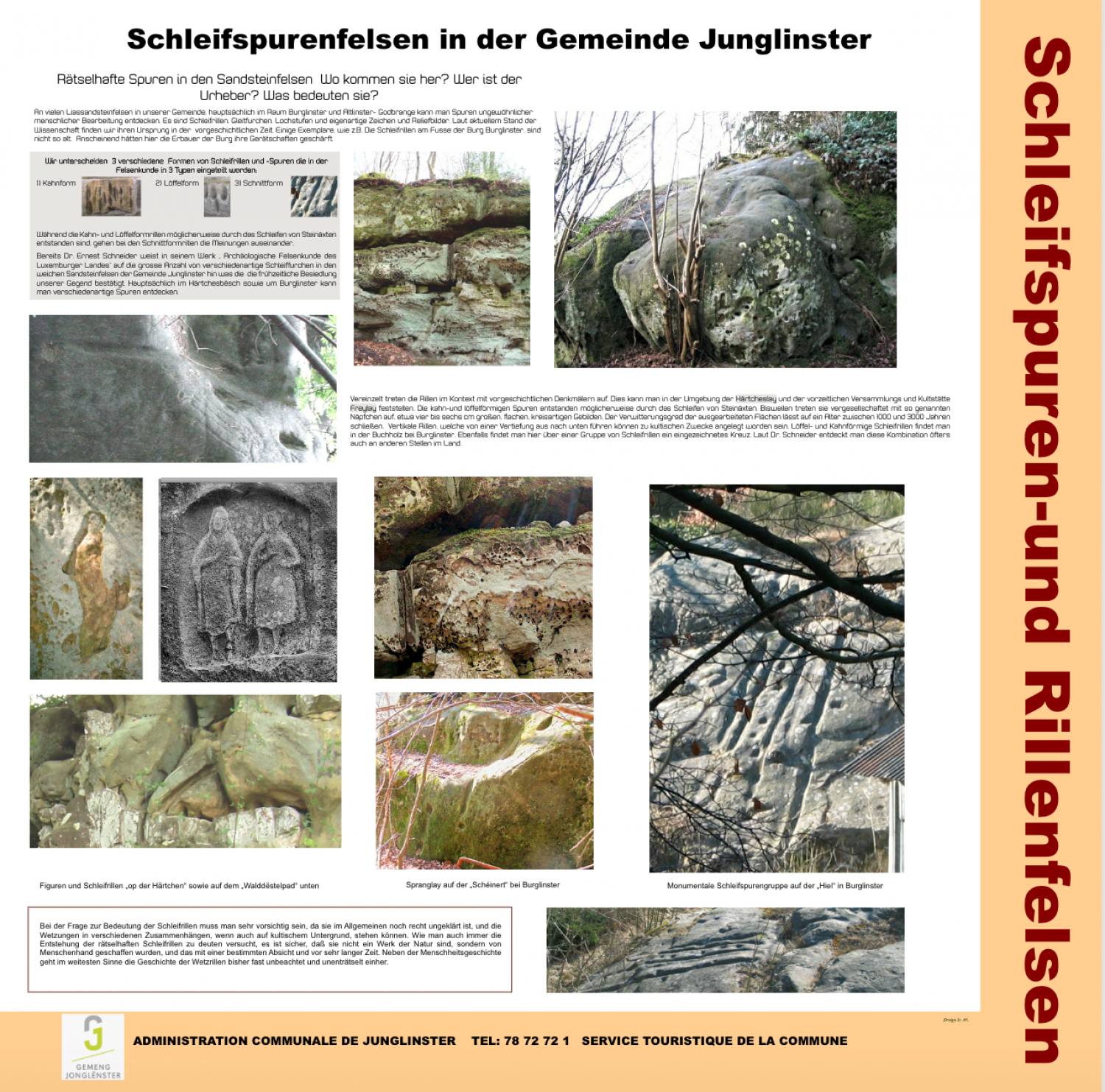Grinding Traces and Ridged Rocks

Mysterious traces in the sandstone rock face Where do they come from? Who created them? What do they mean? On many of the Lias sandstone boulder and cliffs in out parish, particularly in the area of Burglinster and Altlinster-Godbrange, traces of unusual human activity can be found. They are grinding grooves, rubbing furrows, hole steps and unique drawings and relief images. The present scientific opinion is that their origin reaches back into prehistory. Certain examples, such as the grinding grooves at the foot of Burglinster castle, are not so old. Apparently the builders of the castle were sharpening their tools. We differentiate between three types of grinding grooves and traces, which are divided into 3 types in the study of rocks and cliffs. 1) Boat-shaped 2) Spoon-shaped 3) Cut-shaped While the boat and spoon-shaped grooves may have been made by the grinding of stone axes, opinions are divided as to the cut-shaped groves. In his book “Archaeological Rock and Cliff Studies of the Luxembourg Countryside”, Dr. Ernest Schneider pointed to the large number of variously shaped grinding furrows in the while sandstone cliffs of the parish of Junglinster, which confirm the early settlement of our region. A wide range of traces can be found, particularly in Härtchesbësch but also in Burglinster. Individual grooves appear in the context of prehistoric memorials. This can be seen in the area of the Härtcheslay and the prehistoric gathering and cultic site Freylay. The boat and spoon-shaped traces were likely created by the grinding of stone axes. Occasionally they occur in groupings with so-called cells, which are four to six cm, flat, round shapes. The weathering of the worked surfaces leads to an estimated age of 1000 to 3000 years. Vertical grooves, which run from a depression downwards, could have been arranged for cultic purposes. Spoon and boat-shaped grinding grooves can be found in Buchholz near Burglinster. Here, there is also a group of grinding grooves which have been drawn over with a cross. According to Dr. Schneider, this combination can be found in other places around the country. [images:] Figures and grinding grooves “op der Härtchen”, as well as along the “Walddëstelpad” below Spranglay on the “Schéinert” near Burglinster Monumental grinding groove group on the “Hiel” in Burglinster When it comes to the question of the meaning of the grinding grooves, caution is called for. It is generally still unclear, and the whetting work could have been done in a variety of contexts, including a cultic background. However one tries to explain the origins of the mysterious grinding grooves, one thing is certain: they are not nature’s handiwork but were created by human beings, with a certain intention and a very long time ago. In the broadest sense, the story of the whetting grooves runs parallel to the story of humanity itself, until now all but overlooked and still unsolved.
Download Flyer (PDF)